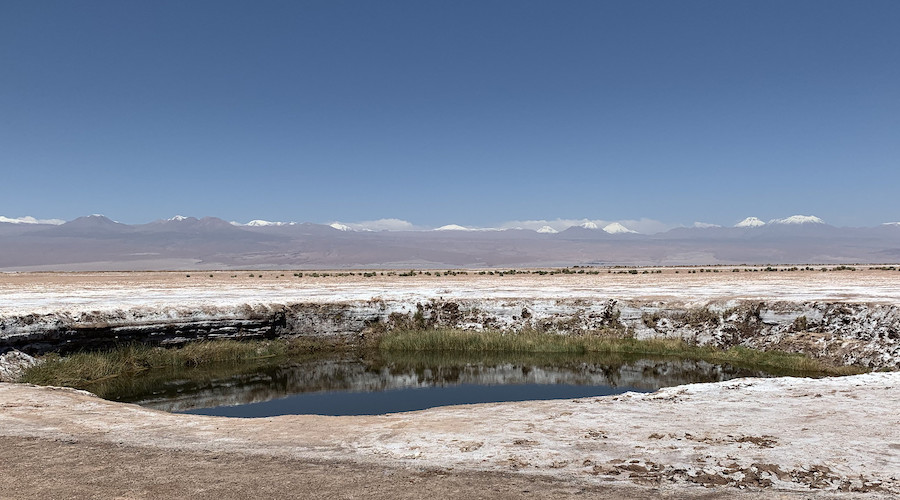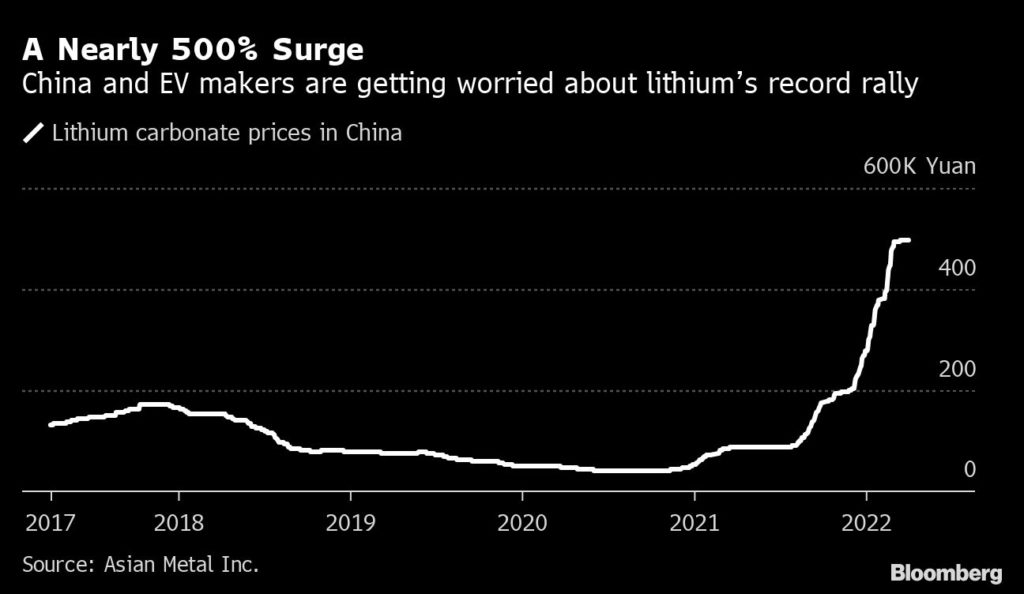The battery metal really worrying China is lithium, not nickel

Nickel has captured much of the limelight among battery metals in recent weeks, and understandably so. Wild price swings, including an unprecedented 250% advance over two trading sessions amid a short squeeze, and concerns tied to Russia’s role as a key supplier have added to longstanding worries among automakers about securing enough of the material.
Even so, it’s another metal that’s been causing concern in the world’s largest electric vehicle market.
China’s government last month hauled in a whole range of market players for two days of talks focused on halting a breakneck run-up in lithium, the metal that’s vital for almost all rechargeable batteries and critical to the roll-out of emissions-free cars and clean energy.
Lithium carbonate in China jumped about 472% from a low last June to a record high on March 15, according to pricing provider Asian Metal Inc. An index of global lithium prices compiled by Benchmark Mineral Intelligence has surged almost 490% in the past year.

At the March seminar, which included industry groups, raw materials suppliers and battery manufacturers, China’s Ministry of Industry and Information Technology, demanded “a rational return” to more typical lithium prices. Talks focused on supply bottlenecks, pricing mechanisms and what officials described as the healthy development of the country’s new-energy vehicle and battery sectors.
While similar interventions to manage soaring commodity prices have been common for coal and steel, it’s a rare step in the electric vehicle sector and underscores Beijing’s nervousness about the impact of rising lithium costs.
As my colleague Danny Lee wrote earlier Monday, automakers are already grappling with the hikes in raw materials. Several have raised sticker prices in response. By making electric models too expensive, they risk slowing the pace of adoption.
“The industry is facing a very strong headwind from cost escalation,” Brian Gu, president of Xpeng Inc., told Bloomberg Television last week. The Guangzhou-based producer last month raised the price of its vehicles by between 10,100 yuan ($1,572) and 20,000 yuan.
Vehicle manufacturers are suffering from “opportunistic price hikes,” to lithium products, Nio Inc.’s founder William Li said on an earnings call last month. He urged suppliers to consider the impact of higher costs on development of the EV industry.
The sector’s challenges follow decisions to slow or halt expansions and new projects during a two-year lithium price slump through the middle of 2020. That, combined with covid-19 disruptions, means additions to supply simply can’t keep pace with rising requirements.
Demand for lithium will jump fivefold by the end of the decade, according to BloombergNEF. Roughly $14 billion of investment is needed to finance lithium resource and refining capacity by 2025, plus another as much as $5 billion by 2030, BNEF forecasts.
There are some signs that governments, producers and consumers are now recognizing the scale of that task.
Tesla Inc. signed two recent supply pacts with developers of future projects in Australia, while Ganfeng Lithium Co. — one of the world’s largest producers — said last week it’ll use record profits to support a huge expansion program, aimed at delivering the eventual capacity of 600,000 tonnes of lithium carbonate equivalent, compared to the production of about 89,000 tonnes now.
China’s authorities have called for quicker development of a domestic lithium sector that already dominates world production, highlighting growth prospects in Qinghai, Sichuan and Jiangxi provinces. In the U.S., President Joe Biden last week added battery metals, including lithium, to a list of items covered by the Defense Production Act, meaning companies can access funding to boost output or to study potential new developments.
(By Annie Lee)
{{ commodity.name }}
{{ post.title }}
{{ post.date }}

Comments